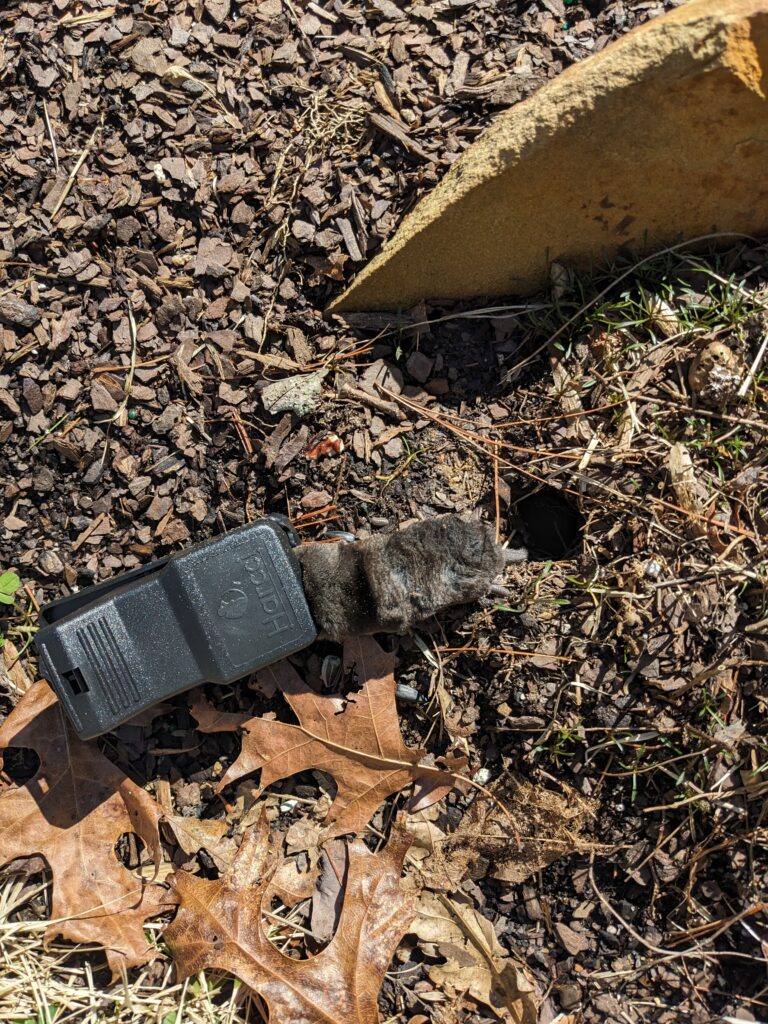Trapping Voles in the Landscape
go.ncsu.edu/readext?995441
en Español / em Português
El inglés es el idioma de control de esta página. En la medida en que haya algún conflicto entre la traducción al inglés y la traducción, el inglés prevalece.
Al hacer clic en el enlace de traducción se activa un servicio de traducción gratuito para convertir la página al español. Al igual que con cualquier traducción por Internet, la conversión no es sensible al contexto y puede que no traduzca el texto en su significado original. NC State Extension no garantiza la exactitud del texto traducido. Por favor, tenga en cuenta que algunas aplicaciones y/o servicios pueden no funcionar como se espera cuando se traducen.
Português
Inglês é o idioma de controle desta página. Na medida que haja algum conflito entre o texto original em Inglês e a tradução, o Inglês prevalece.
Ao clicar no link de tradução, um serviço gratuito de tradução será ativado para converter a página para o Português. Como em qualquer tradução pela internet, a conversão não é sensivel ao contexto e pode não ocorrer a tradução para o significado orginal. O serviço de Extensão da Carolina do Norte (NC State Extension) não garante a exatidão do texto traduzido. Por favor, observe que algumas funções ou serviços podem não funcionar como esperado após a tradução.
English
English is the controlling language of this page. To the extent there is any conflict between the English text and the translation, English controls.
Clicking on the translation link activates a free translation service to convert the page to Spanish. As with any Internet translation, the conversion is not context-sensitive and may not translate the text to its original meaning. NC State Extension does not guarantee the accuracy of the translated text. Please note that some applications and/or services may not function as expected when translated.
Collapse ▲Step by Step Instructions to Trapping Voles in the Landscape
1) First identify that you have voles and not moles. Meadow voles live most of their lives above ground, whereas pine voles are much smaller and live almost all their lives underground. Damage by meadow voles is usually to the base of plants and fruit trees. Pine voles will destroy the root systems of plants and trees. Pine voles create golf ball-sized exit holes like the ones show here in this picture.
2) Mouse traps can be used to control a small population by placing the trap perpendicular to the runway with the trigger end at the enterance to the voles exit hole. Sunflowers make a great bait.
3 )The trap should be covered by a clay pot or pot weighed down with a rock to prevent pets and birds from injury. It also keeps the trap in the dark, which pine voles prefer.
4) Voles are easiest to trap in fall and late winter. Check the traps at least once a day and reset until no voles are caught for a week.








